About the Little Penguin
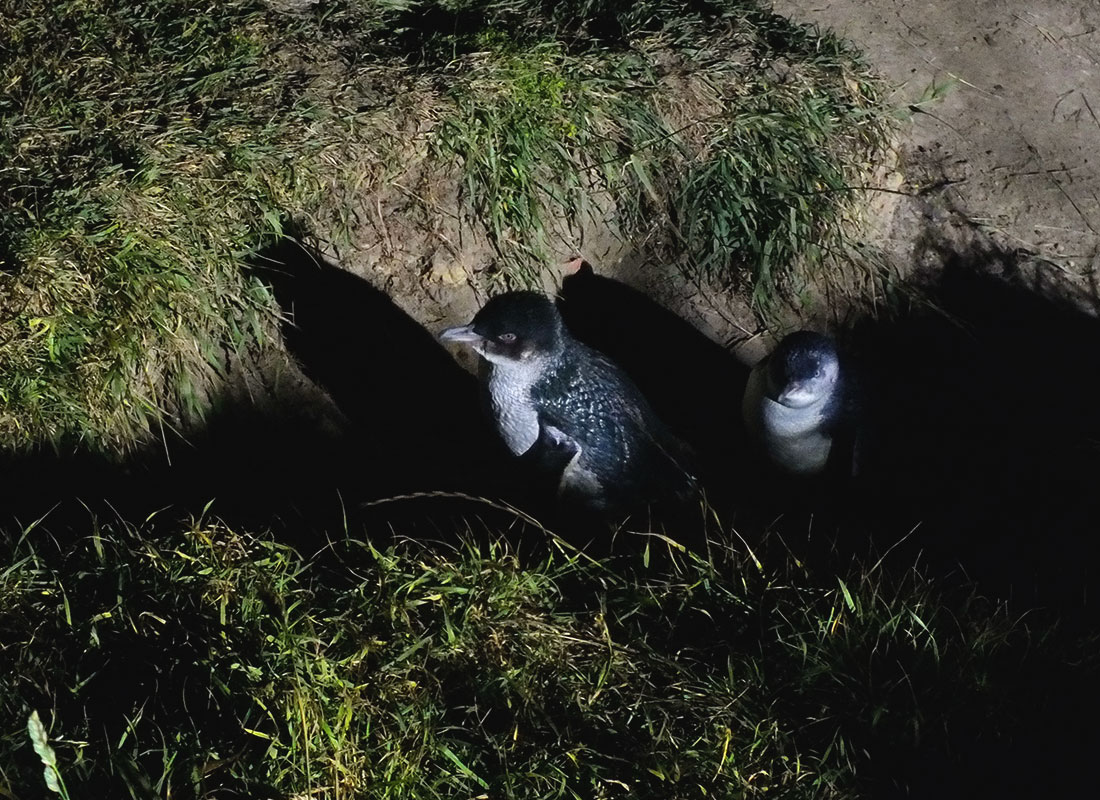
A Little Penguin Overview
Little Penguins are the smallest penguin in the world! They are roughly only 33cm tall and weigh around 1 kilogram. The Little Penguin breeds in colonies along coastlines of Australia and New Zealand, with some calling Penneshaw, Kangaroo Island their home!
These penguins spend around 80% of their lives at sea looking for food and then returning to their nesting burrows to breed, raise chicks, moult and to take a little break from the many weeks spent swimming!
The Little Penguin’s Camouflage
Little Penguins are the only penguin in the world with blue and white feathers. The blue colour on the back of the penguin camouflage the penguin from flying predators such as eagles. The light coloured stomach blends in with the sky to camouflage the penguin from the predators underneath in the water, such as seals.
History of Little Penguin on Kangaroo Island
The earliest record of the Little Penguins around Kangaroo Island was in 1826.
Once, Little Penguins ruled the streets of Penneshaw. Some locals say there were thousands of Little Penguins in Penneshaw.
Sadly penguin numbers dropped significantly in the early 2000s. Various reasons for their decline include: long nosed fur seals, human impact, feral cats and dogs.
Currently there are approximately 15 breeding pairs within the walking areas if the tour. Sightings of penguins on tour can vary.
Once an abundance of penguins, now privilege to see on Kangaroo Island.
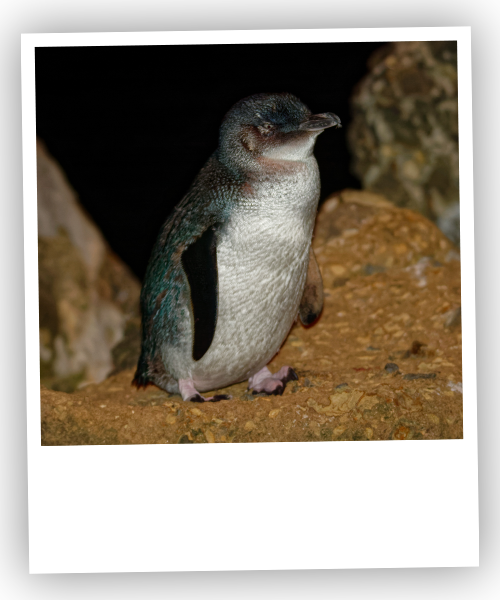
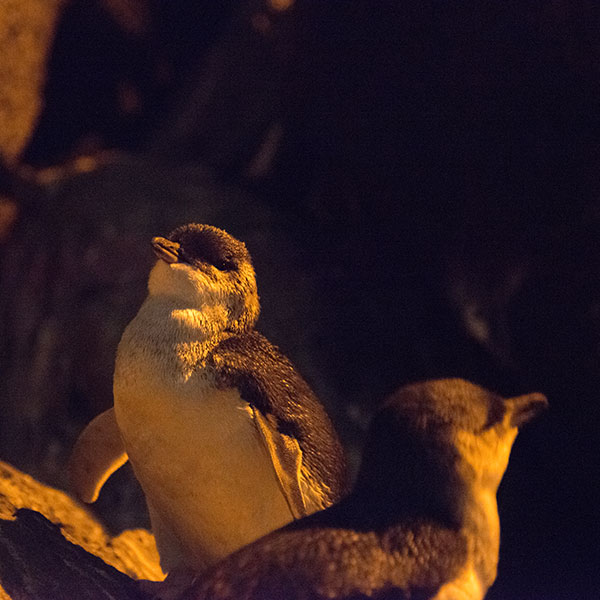
How about some random fun facts about Little Penguins?
They have 3 eye lids. The extra eyelid opens and closes sideways! They have about 10,000 feathers. Most birds have around 3,000. They are the smallest penguin in the world.
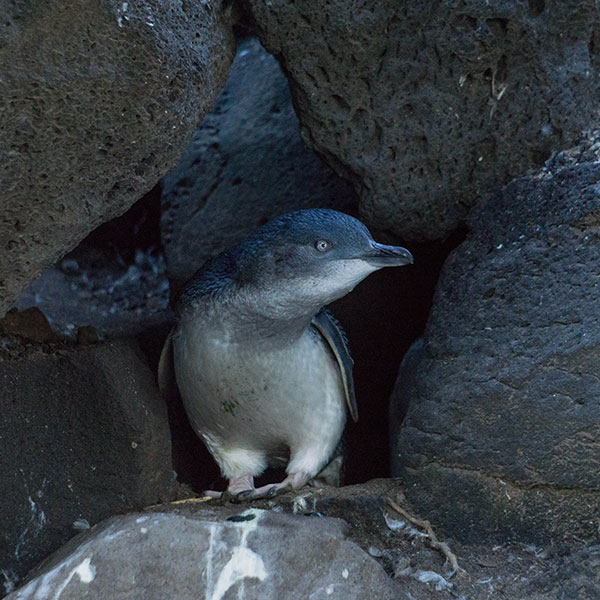
How about some more quick facts?!
They are found on the southern part of the Australian coastline and New Zealand. They have micro sleeps that last for 3 minutes. These sleeps can occur: on top of the water, in/near their burrow, during the day or night.
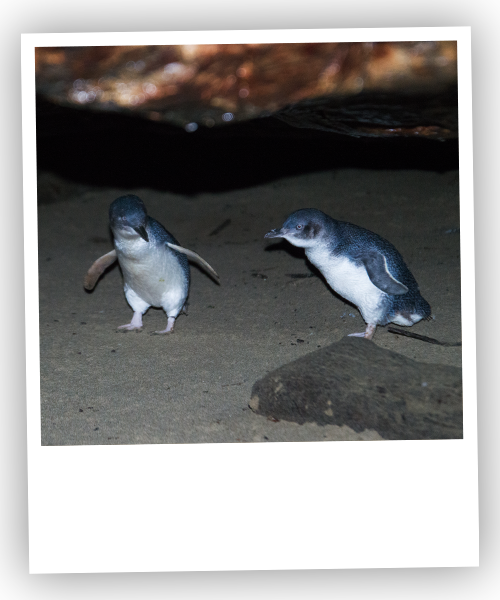
Life Cycle of the Little Penguin
Eggs: the female will lay a clutch of two eggs. Once laid, the parents share the job of incubating the eggs (about 35 days).
Chicks: Vulnerable new baby chicks have parent number 1 with them while parent number 2 is out at sea fishing for squid, anchovies and pilchards and bringing back food for the chicks.
Adults: At just 8 weeks of age the now no longer chicks are ready to go out to sea. They generally return to their home colony after a year abroad, or their ‘gap year’. Around the age of 2 the penguins can reproduce. Little Penguins on average live between 7-10 years in the wild, but can live up to 25 years of age.
The Annual Catastrophic Moult: Every year the Little Penguins go through a two week long moult of their feathers. After doubling their weight to 2kg, they come ashore to their burrows and lose all of their feathers and grow new feathers. During this time they cannot enter into the water as their feathers are not waterproof.
Little Penguin Tour Information
Torches: Special wildlife torches are used with a red/ pink filter. This filter is used to minimise the disturbance to the wildlife. Once a penguin is found, we will use just one light on the penguin.
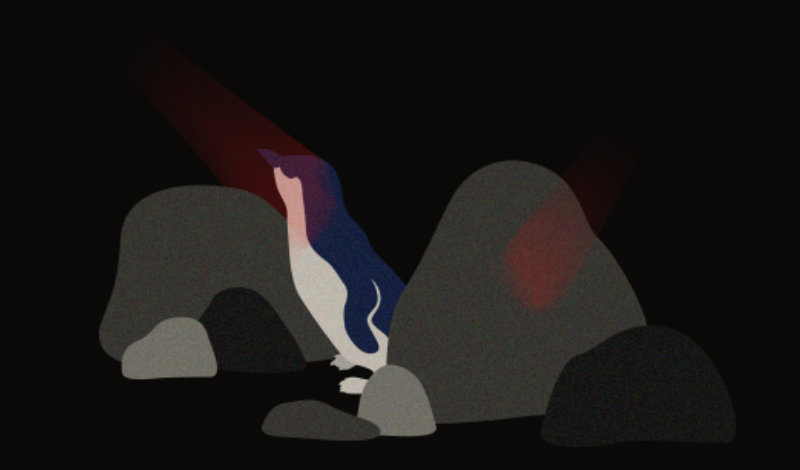
Danger: We will be walking on the road near the ferry. Please watch out for cars and other traffic. There are some, uneven walking surfaces and some cliff sections. Please take your time and be careful.
Walk on defined paths. Keep cats and dogs away from penguin areas.
Put your rubbish in the bin.
If you see a penguin, keep your distance and please do not touch them.
Sick and injured wildlife can be reported to the 24/7 ranger on: 0477 334 898
In 2018, a local found a Little Penguin with a fishing line wrapped around it. Thankfully the penguin was released from fishing line and survived. Our choices impact wildlife.
